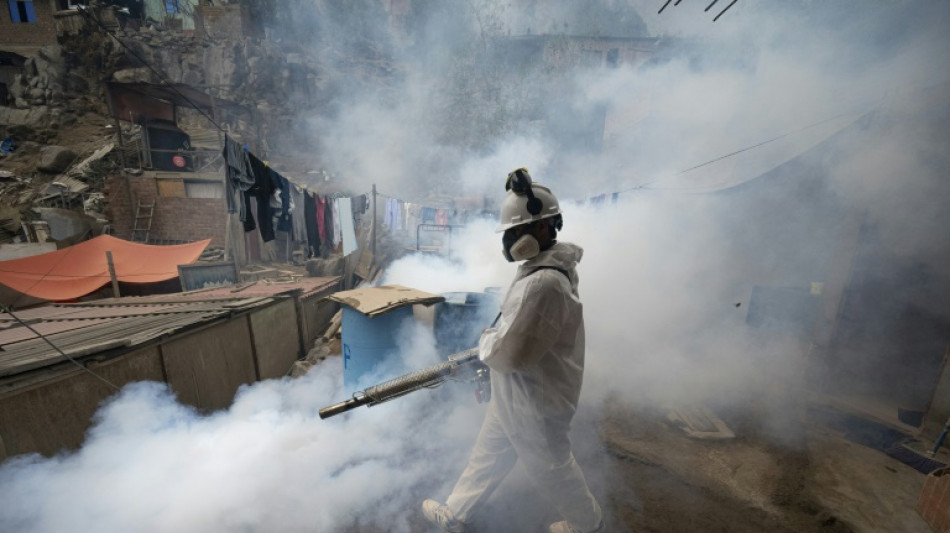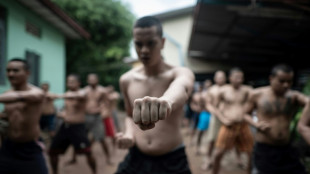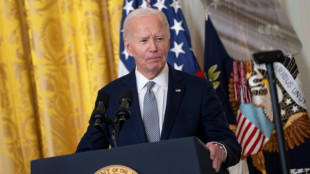

Peru fumigation effort aims to curb dengue outbreak
Health personnel in protective suits are going door to door in Peru, fumigating homes to eradicate mosquitos spreading the dengue-causing virus that has already killed 79 people in the country this year.
More than 73,000 people have been infected and 671 hospitalized in the latest outbreak to hit the South American country, according to the government, which blames the El Nino weather phenomenon.
"We are looking for the larvae (of the mosquito) and fumigating house by house to combat the outbreak," Martin Gutierrez, health director for central Lima, told AFP.
The campaign started two weeks ago, with dozens of fumigators deployed in 20 of Peru's 25 departments, including the capital, with a potent insecticide.
San Juan de Lurigancho, an impoverished Lima neighborhood of some 1.5 million people, has been among the hardest-hit by the outbreak.
During a recent intervention, residents stood outside on the street observing as health workers in protective suits and masks sprayed chemicals in and around their wood and raw brick homes.
"Dengue is killing many people. First it was Covid, we saved ourselves from Covid, now comes dengue," said one of them, 26-year-old merchant Leslie Llontop.
"We have never seen it so strong. In nearly all the neighborhoods of Lima people are getting sick," added another, 41-year-old Erika Toribio.
Dengue fever is a mosquito-borne tropical disease that can provoke a high fever, headache, vomiting, muscle and joint pain, severe bleeding and sometimes death.
There is no specific medicine to treat it.
According to the Pan American Health Organization (PAHO), dengue is transmitted mainly in warm, rainy months by the bite of an infected mosquito of the Aedes aegypti species common in the Americas.
Mosquitos lay their eggs in water, where they then hatch.
Peru has in recent months been hit by flooding and landslides experts said were associated with El Nino, which warms the south Pacific and pummels the country's Pacific coast with heavy rains.
In the first 10 weeks this year, said a recent PAHO report, Peru reported the third-highest number of severe dengue cases in the Americas, after Colombia and Brazil.
Also affected are Bolivia, Nicaragua, Belize, Guadeloupe, Martinique and Panama.
In February, Peru declared a health emergency in several departments after recording a 72-percent increase in dengue cases from the same period in 2022.
For the whole of last year, the country had about the same number of dengue cases and deaths as so far this year.
Among the hardest hit were the northern regions of Piura and Lambayeque, where streets and houses were inundated by torrential rains and mudslides in March and April.
Last month, the World Health Organization said dengue and other diseases such as chikungunya spread by the A. aegypti mosquito, were spreading far faster and further amid climate change.
It also warned that new epidemics of Zika, spread by the same insect, could be expected.
M.Schulz--MP




